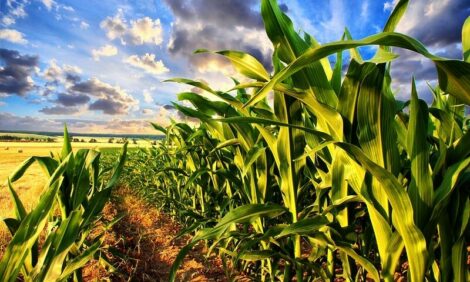



Efficient Scottish Farms Have Lowest GHG Emissions
UK - The clear link between low greenhouse gas emissions and strong technical performance on Scottish livestock farms is revealed in the results of a new study published by Quality Meat Scotland. The discussion paper entitled “Estimating Greenhouse Gas Emissions From Scottish Livestock Enterprises” draws on work undertaken by SAC and commissioned by QMS to estimate the greenhouse gas (GHG) emissions from cattle and sheep enterprises across Scotland.
“Key areas highlighted by the report include an enormous range in individual GHG estimates among enterprises of the same type. The results also show a clear link between low GHG emissions and the best financial returns,” observed ’Uel Morton, QMS Chief Executive.
The results are based on individual analysis of more than 200 cattle and sheep enterprises representing the range of production systems found in Scotland. The estimates consider the production of ruminant livestock up to the point they leave the farm.
“The link between low GHG emissions per kilogramme of output and financial return is the technical efficiency of the enterprise. High livestock productivity, both in terms of calves and lambs born per 100 cows or ewes and daily liveweight gains, is a key driver to improving financial returns and lowering GHG emissions. Contributing further to that efficiency is effective use of feeds, fertilisers and energy,” pointed out Stuart Ashworth, QMS Head of Economics Services.
Scottish farmers in general have already made a significant contribution to lower GHG emissions in Scotland with emissions from rural land use (excluding woodland) reducing by 12.5 per cent between 1990 and 2006.
“The research behind this discussion paper indicates there is capacity within current systems to reduce emissions further while maintaining output. QMS will continue to work with cattle and sheep farmers towards this objective through both our monitor and focus farms and our research and development activities focused on animal health and welfare, nutrition and grassland management,” added Mr Morton.
The paper also highlights the fact that the science of GHG estimation is very much a developing science and currently no universally agreed protocols exist in defining the system boundaries or calculation methodologies.
In particular the role of ruminant livestock production and its use of grassland to sequester carbon is not well understood and is not included in this study. This is a particular weakness in making estimates of GHG emissions from extensive livestock production systems farming the carbon rich soils of Scotland.
The calculations are made using the available knowledge at the time the work was commissioned, in late 2008, using the recommendations of Intergovernmental panel on climate change (IPCC) and British Standard PAS 2050.
However, the lack of a common protocol does mean that these results as presented may not be directly comparable with estimates made in other studies or countries.
TheCattleSite News Desk


